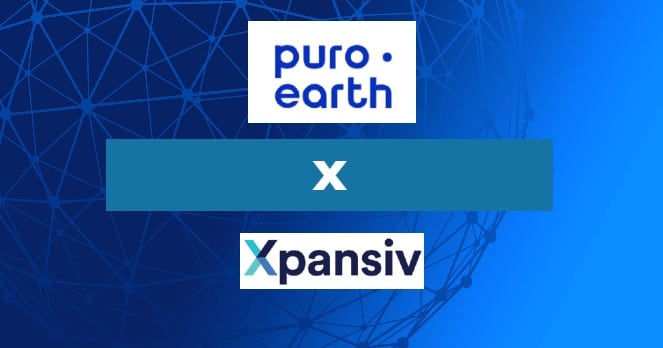Puro.earth and Xpansiv to partner to expand the market for carbon removal credits and strengthen net zero programs.
Nasdaq-backed Puro.earth is the world’s leading carbon crediting platform for engineered carbon removals (CDR) while Xpansiv is the dominant market infrastructure for the global energy transition.
A Giant Merge to Scale Carbon Removals
Efforts have been made in ramping up the carbon removals credit market. This very recent tandem between the two leading market platforms marks a significant development in the space.
The partnership makes Puro.earth CO2 Removal Certificates (CORCs) added to the list for trading on Xpansiv spot marketplace CBL. The market is the largest spot exchange for trading voluntary carbon credits, renewable energy certificates (REC), and other environmental commodities.
Puro.earth’s robust, diverse supplier base provides buyers with a great source of quality carbon removal credits. Its platform currently delivers carbon removal services to some of the world’s giant corporations, such as Shopify and Microsoft.
Puro.earth launched Puro Registry, a public registry dedicated to CORCs last year.
Xpansiv’s CBL offers hundreds of market participants transacting on its centralized and transparent spot exchange and post-trade platform. Xpansiv is the leading provider of registry infrastructure for energy, power, and environmental markets.
Remarking on their partnership, Xpansiv said that participants are eager to include carbon removal credits in their portfolios.
Highlighting the importance of their collaboration with Xpansiv, Puro.earth’s CEO Antti Vihavainen said that scaling up the market for carbon removal credits is essential in the private sector’s net zero programs. Vihavainen further noted that
“CBL’s central position in the carbon markets will be critical in enhancing transparent price discovery and liquidity formation, enabling participants to engage with greater certainty and confidence.”
Carbon removals are becoming more important in companies’ decarbonization strategies, particularly for the hard-to-abate sectors of steel and cement.
Credits for Removing Carbon for Good
Puro.earth’s guiding principle is to create undisputable methodologies for engineered carbon removals. The platform’s ecosystem consists of more than 110 suppliers of carbon CORCs with 600 firms in preparation for getting certified.
Engineered carbon removals are also known as negative emissions technologies. They refer to a set of technologies and methods designed to actively remove CO2 from the atmosphere. Unlike natural carbon removal processes, engineered carbon removals are man-made processes to mitigate the impacts of climate change.
Last year, Nasdaq launched three carbon removal price indexes based on Puro.earth CORCs.
Puro.earth Standard establishes carbon credit methodologies for processes that remove CO2 from the atmosphere for at least 100 years. The company then certifies suppliers that run those processes and issues digital, tradable carbon removal credits into Puro Registry.
The company has recently updated its Terrestrial Storage of Biomass methodology and is reopened for more comments or insights. Initiatives that may certify under this program prevent the escape of carbon from the stored biomass back into the atmosphere.
The partnership between Xpansiv and Puro.earth plays a crucial role in enhancing transparent price discovery and liquidity formation, enabling a more sustainable and confident engagement with carbon removal efforts and credits.

